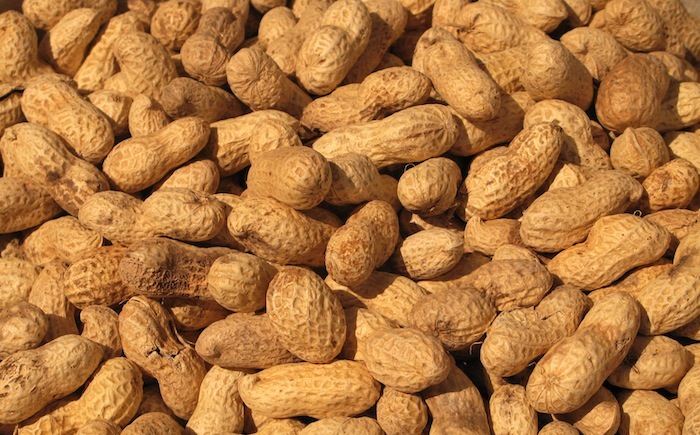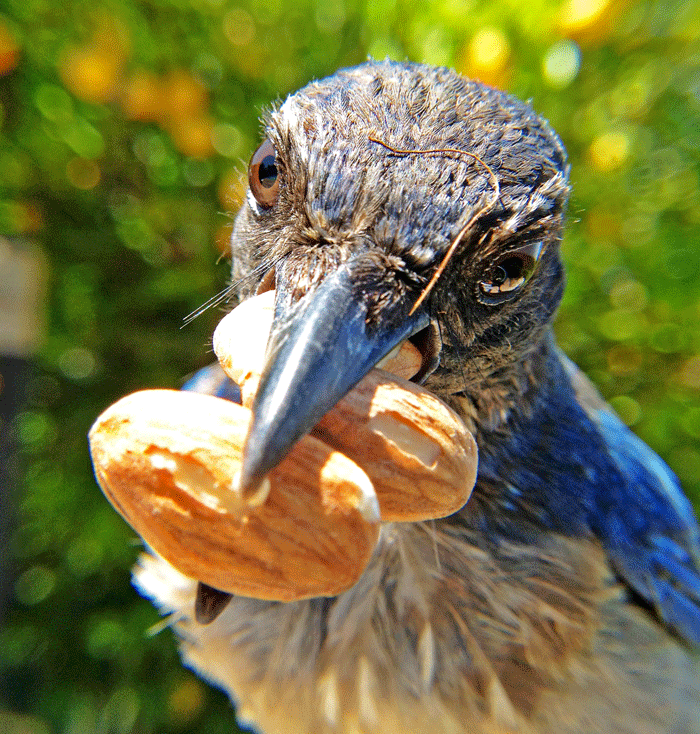
Last month, a New Jersey couple was taken to court for illegally feeding wildlife. The community’s environmental health specialist contended that birds didn’t eat peanuts, so it was a violation of the local code. But as anyone who’s ever put out peanuts at their bird feeder knows, many birds don’t just eat peanuts, they love peanuts.
Even though you might think peanuts are unhealthy, they’re actually really great for birds.
More About Peanuts
Peanuts, as we know from many quiz shows, are not actually nuts. Peanuts are in fact legumes (in the same vein as peas, soybeans and lentils). What makes these so appealing for birds is that they’re highly nutritious.
Peanuts are packed with high levels of fat to give birds energy and protein to help them grow. Aside from the fat and protein contents, peanuts contain potassium, iron, fiber and much more.
What Birds Are Attracted to Peanuts?
While you won’t find smaller birds chowing down the delicious legumes, many species love peanuts. Here’s a partial list of some of the types of birds that eat peanuts:

- Blue Jays
- Scrub Jays
- Cardinals
- Woodpeckers
- Chickadees
- Ravens
- Doves
- Nuthatches
- Titmice
- Crows
- Grackles
- Towhees
- Juncos
How to Serve Peanuts to Birds
Raw vs. Roasted
There’s actually a debate on the best way to serve peanuts. Many people argue that the best way to serve them is natural—that is shelled and raw. The reason for this is that it’s what birds would eat in the wild. Others point out that raw peanuts could be harmful and contain trypsin inhibitors (which may cause kidney and pancreas damage) in birds.
To be safe, you should always serve roasted peanuts to birds. If you have some raw peanuts that you bought from a store, you can simply put them in the oven on about 350 for about 15 minutes.
Shelled vs. Unshelled
The next thing you have to decide is whether to serve them shelled or unshelled. Most birds can actually shell a peanut pretty easily, but there are some smaller birds that need to break them up and it takes some work. Serving either way is perfectly acceptable.
Salted vs. Unsalted
Unlike the previous to options, there’s no choice or debate here: Unsalted is the way to go. Similar to how foods high in salt are bad for us, they’re also bad for birds. Birds can’t process large amounts of salt in their diet and may suffer renal failure and other health issues. You should generally avoid giving any foods with salt to birds.
 Ways to Offer Peanuts
Ways to Offer Peanuts
Now that you have the peanuts and know the best way to serve them, it’s time to offer them up for birds. You can do this a number of ways. The easiest and simplest way is to scatter the peanuts on the ground or on a table. Birds will find the peanuts and eat them, but it can also be pretty messy.
The best types of feeder to put peanuts out on are open feeders like tray or platform feeders. These give larger birds better access to peanuts. You can also put them in a mesh feeder to prevent birds from taking the peanuts away.
Squirrel Treat
Before we end, we can’t talk about feeding peanuts to birds without discussing squirrels. The little critters absolutely love peanuts, so if you put them out for your birds, you can also expect to see them coming around and getting a piece of the action. Alternatively, many companies like Birds Choice make peanut feeders especially for squirrels you can put out to keep them satisfied.



40 Comments
I live in a rural area and the Corvids are my watch dogs. Mountain lions, bobcats, bears, coyotes, foxes – you name it – they let me know that we have bad actors around.
Thanks for sharing this, this will help me better take care of my neighbourhood birds.
Crows and grackles are awesome! Anyway if you put some peanuts on the ground, the grackles will forage there.